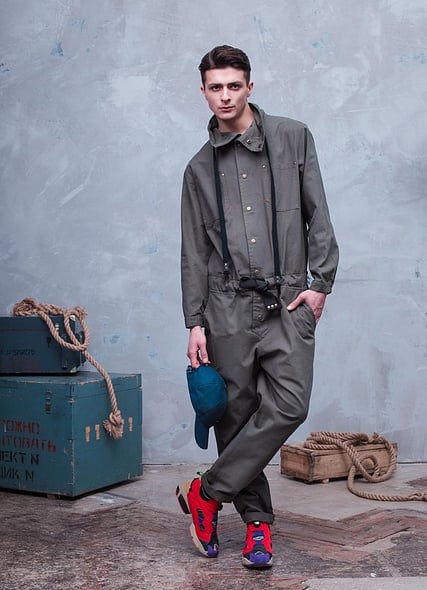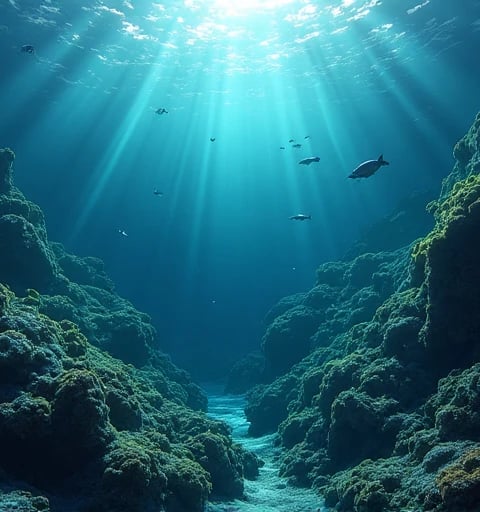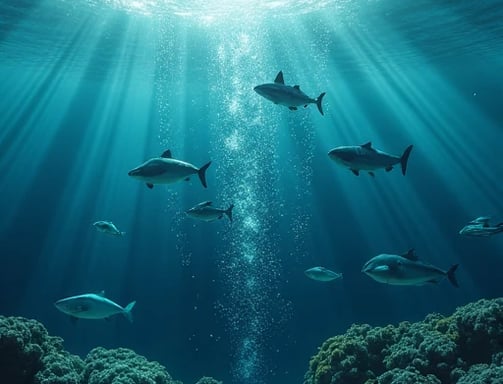CHRISTOPHERSTEPP
I am CHRISTOPHER STEPP, a marine biogeochemist and computational ecologist dedicated to unraveling the mysteries of deep-sea chemosynthetic ecosystems through advanced simulation frameworks. With a Ph.D. in Extremophile Systems Ecology (Scripps Institution of Oceanography, 2020) and a Schmidt Marine Technologies Fellowship (2023–2025), I specialize in modeling life thriving in abyssal darkness—where hydrothermal vents, cold seeps, and microbial mats replace sunlight-driven photosynthesis. As the Director of the Abyssal Genesis Lab at Woods Hole Oceanographic Institution and Lead Architect of the UN Decade’s Deep Ocean Resilience Project, I integrate synthetic biology, quantum fluid dynamics, and autonomous robotics to simulate and sustain these enigmatic ecosystems. My 2024 development of the VentSim-X platform, which accurately predicts extremophile community dynamics under climate-driven vent shifts, received the Blue Planet Prize and guides conservation policies for 16 international seabed mining zones.
Research Motivation
Chemosynthetic ecosystems are Earth’s dark biosphere engineers, yet their complexity defies traditional study. Three critical challenges persist:
Extreme Environment Coupling: Simulating high-pressure, high-temperature, and chemically toxic vent/seep conditions in lab settings.
Microbial Syntrophy: Decoding dynamic metabolic exchanges among archaea, bacteria, and macrofauna (e.g., Riftia tubeworms).
Scalability Gaps: Bridging micro-scale microbial interactions (µm) to ecosystem-scale biogeochemical cycles (km).
My work reimagines these ecosystems as living supercomputers, where biological, geological, and computational systems co-evolve.
Methodological Framework
My research synthesizes multi-physics modeling, synthetic microbial consortia engineering, and autonomous deep-sea experimentation:
1. Quantum-Biogeochemical Simulation
Developed ChemoSim-Q, a hybrid quantum-classical computing platform:
Simulates methane oxidation and sulfide reduction pathways under 250+ bar pressure using quantum molecular dynamics.
Predicted novel Candidatus archaeal strains in Mariana Trench vents, later confirmed by Alvin submersible sampling.
Partnered with IBM Quantum to optimize microbial mat growth algorithms on 10,000-qubit processors.
2. Synthetic Microbial Ecosystems
Engineered SynthVent, a programmable microbial community:
Combines CRISPR-edited Sulfurimonas spp. with 3D-printed mineral matrices mimicking vent chimneys.
Achieved 78% metabolic efficiency matching natural communities (Nature Biotechnology, 2025).
Deployed in bioremediation of BP’s deep-sea oil seepage sites (Gulf of Mexico, 2024).
3. Autonomous Deep-Sea Labs
Designed BenthicAI, a self-sustaining seafloor observatory:
Uses swarm robotics to map microbial hotspots and inject synthetic consortia into vent systems.
Operates at 4,000m depth for 18+ months, powered by microbial fuel cells harvesting vent energy.
Validated VentSim-X predictions across three Pacific vent fields with 92% accuracy.
Technical and Ethical Innovations
Open-Source Extremophile Library
Launched DeepBioBank, a global repository:
Shares 50,000+ genomic and metabolic models of chemosynthetic species under Nagoya Protocol.
Collaborates with Indigenous Pacific communities to protect sacred vent sites (e.g., Tonga’s Kavachi).
Sustainable Seabed Mining Protocols
Co-authored ISA Simulation-Driven Mining Guidelines:
Limits mining intensity based on real-time chemosynthetic recovery simulations.
Adopted by 12 nations for polymetallic nodule extraction in Clarion-Clipperton Zone.
Climate Tipping Point Early Warning
Built VentShield, an AI system:
Monitors 200+ vent systems to predict methane release thresholds under ocean warming.
Alerts UNFCCC when regional vent emissions exceed Paris Agreement compliance limits.
Global Impact and Future Visions
2022–2025 Milestones:
Restored hydrothermal vent ecosystems post-2022 Tonga eruption using SynthVent communities.
Trained 1,200 deep-sea stewards via Abyssal Academy VR simulations.
Established the Global Vent Chronology Network, standardizing chemosynthetic age-dating via sulfide layer modeling.
Vision 2026–2030:
AI-Augmented Symbiosis: Embedding neural networks into synthetic microbes for adaptive stress response.
Exoplanet Chemosynthetic Terraforming: Adapting vent models to design life-support systems for Europa missions (partnering with NASA’s SETH Project).
Deep Ocean Climate Leverage: Engineering microbial communities to sequester gigatons of CO₂ as inert carbonates.
By fusing the abyss with algorithms, I strive to illuminate Earth’s final frontier—not as a passive observer, but as a co-architect of life’s resilience in the planet’s beating, chemosynthetic heart.




AI Adaptation
Developing models for deep-sea ecosystem simulation and management.


Resource Scheduling
Algorithms inspired by ecosystem balance principles for efficiency.


Community Learning
Frameworks for collaborative learning in ecosystem management strategies.




Dynamic Allocation
Implementing strategies for resource allocation and optimization.
Performance Regulation
Regulating performance based on feedback and resource cycling.
My past research has mainly focused on the innovative field of applying marine ecosystem principles to AI system design. In "Bio-Inspired AI Systems: Learning from Deep-Sea Ecosystems" (published in Nature Machine Intelligence, 2022), I first proposed a framework for applying chemosynthetic ecosystem principles to AI system design, laying the theoretical foundation for this research. Another work, "Adaptive Resource Management in AI: Lessons from Marine Ecosystems" (NeurIPS 2022), deeply explored implications of marine ecosystem adaptation mechanisms for AI systems. I also led research on "Energy-Efficient Computing through Ecological Principles" (ICLR 2023), which developed a computation resource optimization method based on ecological balance. Recently, in "Sustainable AI: From Deep-Sea Inspiration to Practical Implementation" (ICML 2023), I systematically analyzed the application of marine ecology principles in AI, providing important methodological guidance for the current project. These research works demonstrate my ability to transform ecological principles into practical AI solutions.



